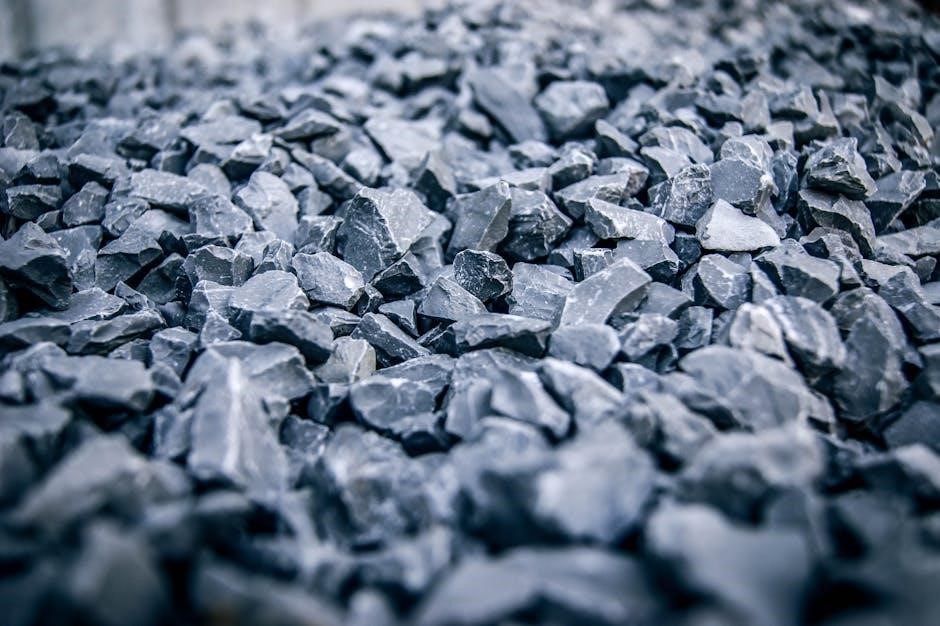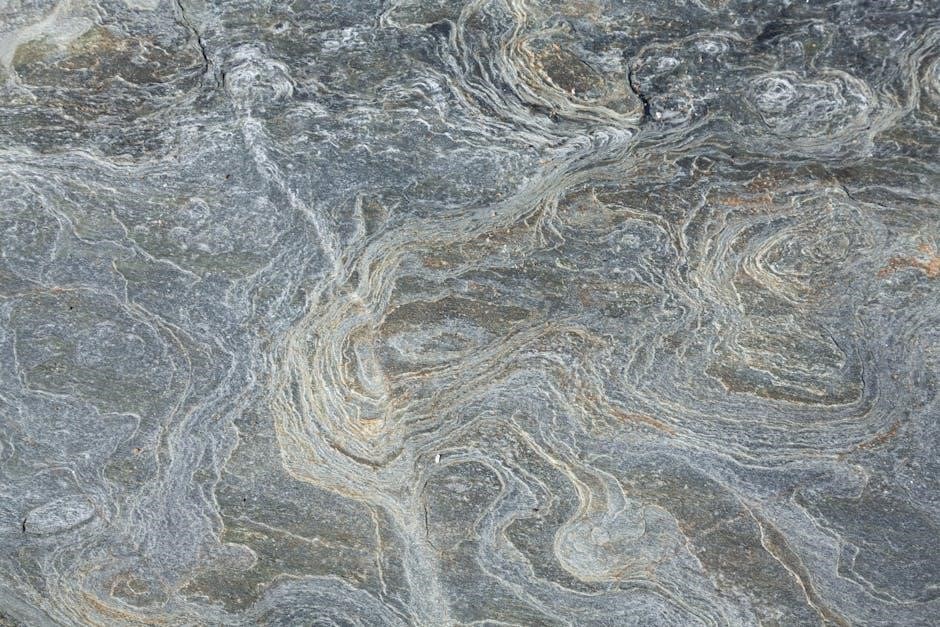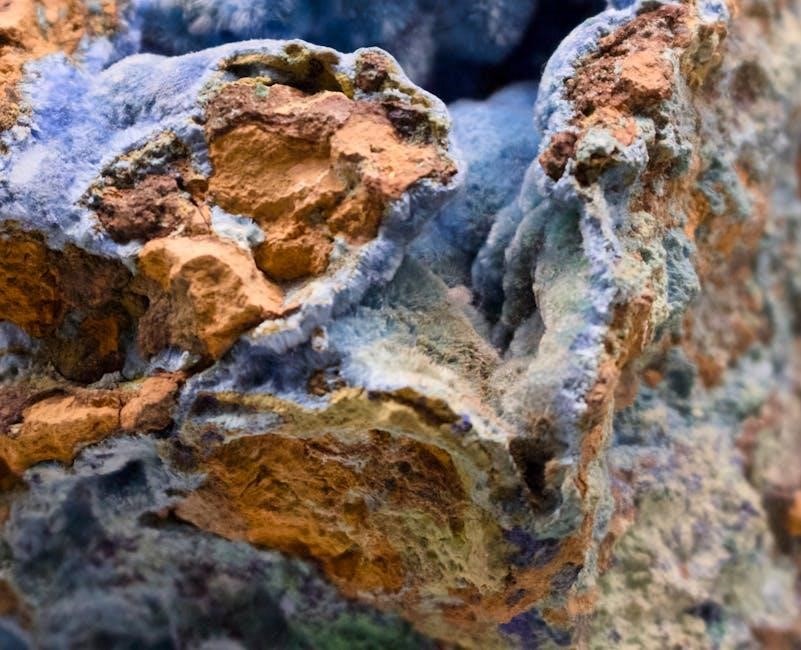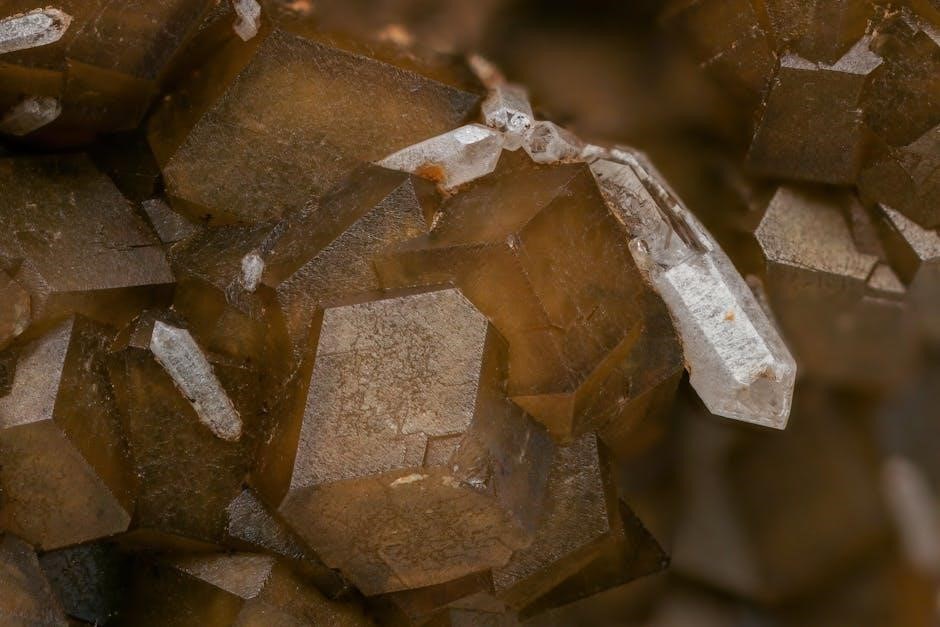The Mohs scale of mineral hardness is a scale used to measure mineral hardness, created by Friedrich Mohs, with a range of one to ten values easily.
Definition and Purpose
The definition of Mohs scale of mineral hardness is a scale used to measure the scratch resistance of minerals. The purpose of this scale is to provide a way to compare the hardness of different minerals. The scale is defined by ten minerals, each with a known hardness, and is used to determine the hardness of other minerals by comparing their scratch resistance to that of the minerals on the scale. The Mohs scale is a useful tool for geologists, mineralogists, and other scientists who study minerals and need to determine their hardness. It is also used in various industries, such as mining and construction.

Mohs Scale Classification
Minerals are classified by hardness using the Mohs scale easily online.
Mineral Classification
The Mohs scale of mineral hardness is used to classify minerals based on their hardness, with talc being the softest and diamond the hardest.
The scale is a useful tool for geologists and mineralogists to identify and classify minerals.
Mineral classification is an important aspect of geology and mineralogy, and the Mohs scale is a fundamental part of this process.
The scale is used to determine the hardness of a mineral by scratching it against another mineral of known hardness.
This process allows minerals to be classified and identified based on their physical properties.
The Mohs scale is a simple and effective way to classify minerals, and it is widely used in the field of geology and mineralogy today.
Hardness Test
Mineral hardness is measured using the Mohs scale with simple scratch tests easily.
Measuring Hardness
Measuring hardness is a crucial aspect of mineralogy, and the Mohs scale provides a simple and effective way to do so. The scale ranges from 1 to 10, with 1 being the softest and 10 being the hardest. By using the Mohs scale, geologists and mineralogists can determine the hardness of a mineral by scratching it with another mineral of known hardness. This method is still widely used today, and it has been instrumental in the discovery and classification of many minerals. The Mohs scale has become an essential tool in the field of mineralogy, and its importance cannot be overstated in the study of minerals and their properties. The process is straightforward and easy to implement.

Applications of Mohs Scale
The Mohs scale has various applications in geology and mineralogy fields easily.
Geology and Mineralogy
The Mohs scale is widely used in geology and mineralogy to identify and classify minerals based on their hardness. This scale is useful for geologists and mineralogists to determine the mineral’s resistance to scratching and abrasion. The scale is also used to identify the mineral’s chemical composition and crystal structure. In geology, the Mohs scale is used to study the formation of rocks and minerals, and to understand the geological processes that shape the Earth’s surface. The scale is an essential tool for geologists and mineralogists to conduct research and fieldwork, and to classify and identify minerals accurately and efficiently in various fields.

Mohs Scale in Everyday Life
Mohs scale is used in dentistry to measure enamel hardness with values easily.
Dental Enamel
Dental enamel is the hardest tissue in the human body, with a hardness of 7 on the Mohs scale of mineral hardness, similar to crystal.
The Mohs scale is used in dentistry to measure the hardness of enamel, which is the outermost layer of the teeth.
This scale is useful in understanding the wear and tear of teeth, and how to prevent damage to enamel.
The hardness of enamel is due to its composition, which is mostly made up of minerals such as hydroxyapatite.
The Mohs scale provides a way to compare the hardness of different materials, including dental enamel, and is an important tool in dentistry.

Online Resources
ResearchGate provides access to papers and publications on the Mohs scale of mineral hardness easily online always available.
Research and Studies
Researchers use the Mohs scale of mineral hardness to study and classify minerals, with many studies available online as PDF documents.
The scale is widely used in geology and mineralogy to determine the hardness of minerals, with a range of one to ten values.
Many research papers and articles have been published on the topic, providing valuable information on the Mohs scale and its applications.
These studies can be accessed through online databases and research platforms, such as ResearchGate, which provides a wealth of information on the subject.
By studying the Mohs scale, researchers can gain a deeper understanding of minerals and their properties, leading to new discoveries and advancements in the field.
The Mohs scale is an essential tool for researchers, allowing them to classify and analyze minerals with precision and accuracy.
Education and Outreach
Teaching materials and resources are available online to educate students about mineral hardness and the Mohs scale easily and effectively always;
Teaching Materials
Teaching materials and resources are available online to educate students about mineral hardness and the Mohs scale. These materials include lesson plans, activity sheets, and presentations that can be used in classrooms. The Woodside Australian Science Project produces support packages for the Earth Science component of the Australian Curriculum, which include hands-on activities for students and teacher support materials. Additionally, online resources such as ResearchGate provide access to research papers and studies on the Mohs scale, which can be used to develop educational materials; These resources can help teachers create engaging and informative lessons on mineral hardness and the Mohs scale.
Mohs scale is a useful tool for measuring mineral hardness with online resources available for education and research purposes only always.
Importance of Mohs Scale
The Mohs scale is a fundamental tool in geology and mineralogy, allowing for the identification and classification of minerals based on their hardness. This scale is essential for understanding the physical properties of minerals and their potential uses. The Mohs scale is also used in various industries, such as mining and construction, to determine the durability and resistance of materials. Additionally, the scale is used in education and research to teach students about mineral properties and to conduct further studies on mineral hardness. The importance of the Mohs scale lies in its ability to provide a simple and effective way to measure mineral hardness, making it a crucial tool in many fields.